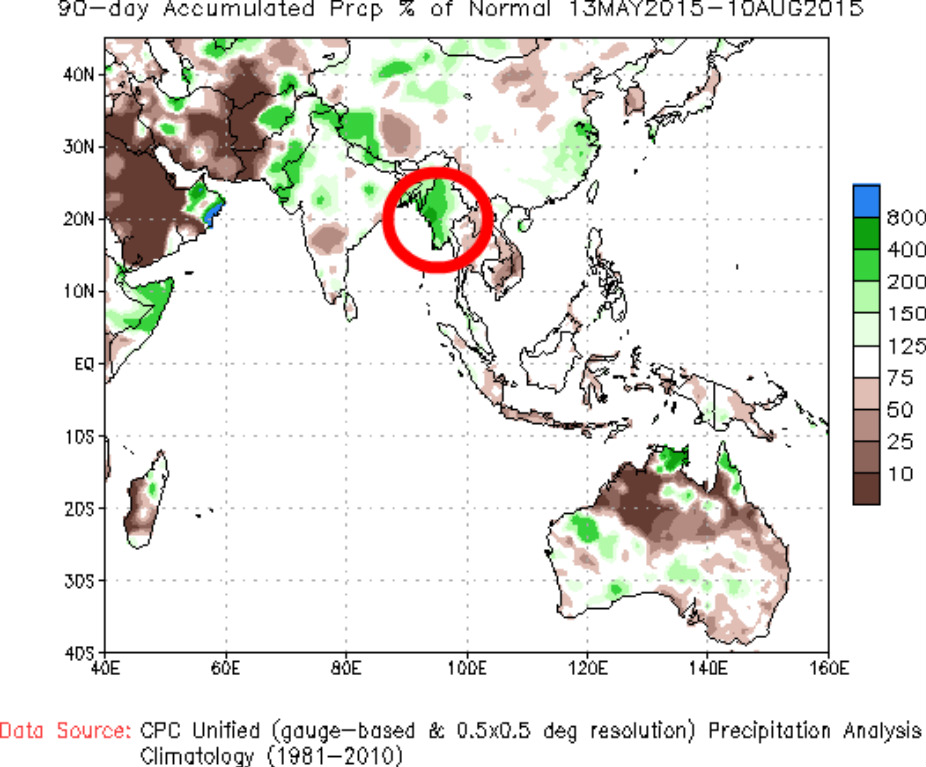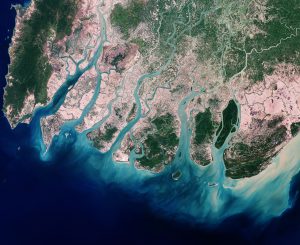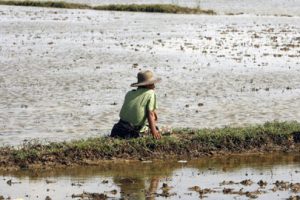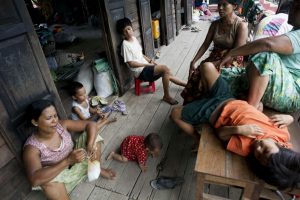By Harland Dahl
Twelve of Myanmar’s fourteen regions are facing severe flooding, a result of abnormally heavy monsoon rains. Flash flooding and landslides have affected more than 330,000 of Myanmar’s people and killed 88 others, according to the country’s Ministry of Social Welfare, Relief, and Resettlement.

In the last few weeks, monsoon rains have swept through much of South and Southeast Asia, killing hundreds and displacing millions. In Myanmar, this monsoon has affected many of the country’s poorest who often live in low-lying regions most vulnerable to flooding.
The states hit hardest by heavy rains and flooding include Rakhine and Chin. The state of Rakhine has suffered the most casualties; Cyclone Komen killed 57 people in Rakhine last week.

Other people of Myanmar most at risk include those living in the southwest Ayeyarwady delta region, home to 12 percent of Myanmar’s population. Myanmar President Thein Sein has instructed inhabitants to seek shelter on higher land as the region’s rivers start to rise. In response to this and other warnings, many people of Myanmar have taken refuge in monasteries and makeshift shelters to protect themselves from the monsoon and the dangers it brings.
Myanmar’s flooding threatens not only homes and infrastructure, but has also destroyed crucial agricultural land and resources. This loss of resources, including 200,000 acres of destroyed farmland, could mean heightened levels of malnutrition for Myanmar’s poorest. Dom Scalpelli, director of the United Nation’s World Food Programme, explained, “Thousands of people have lost their homes, livelihoods, crops, and existing food and seed stocks. Food security will be seriously affected [by the monsoon].”

The government of Myanmar, which took power in 2011 and will face elections this November, is facing criticism from citizens for its response to the monsoon. Although the government has attempted to relocate at-risk people and rebuild communities, it has been accused of understating the magnitude of the crisis and being slow to warn citizens of impending dangers. Last week, the New Light of Myanmar, a government-owned newspaper, conceded that, “the government’s weak response to the disaster led to misunderstandings about evacuation efforts.”
On August 4th, the government of Myanmar announced that it had appealed for international assistance to provide relief for its people in the forms of temporary shelter, food, and clothing. A spokesman for the president’s office explained, “We are cooperating and inviting international assistance. We have started contacting possible donor organizations and countries. “

Myanmar is now receiving aid from various organizations and countries, including the United Nations, Save the Children, and the government of Australia. On August 7th, the United Nations authorized $9 million in aid from the UN Central Emergency Response Fund to be allocated to aid organizations working in Myanmar.
These funds are intended to speed up relief efforts by helping to provide emergency shelters, safe food and water supplies, improved sanitation services, and emergency health care. As of this week, over 387 metric tons of food and 620,000 water treatment tablets have been distributed to the people of Myanmar.